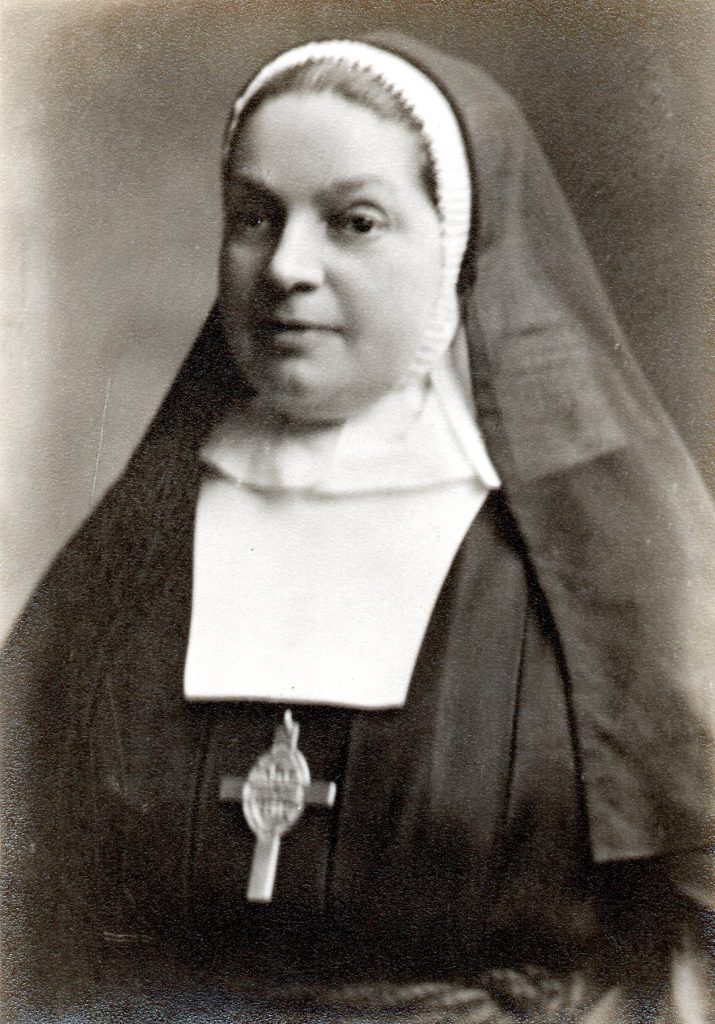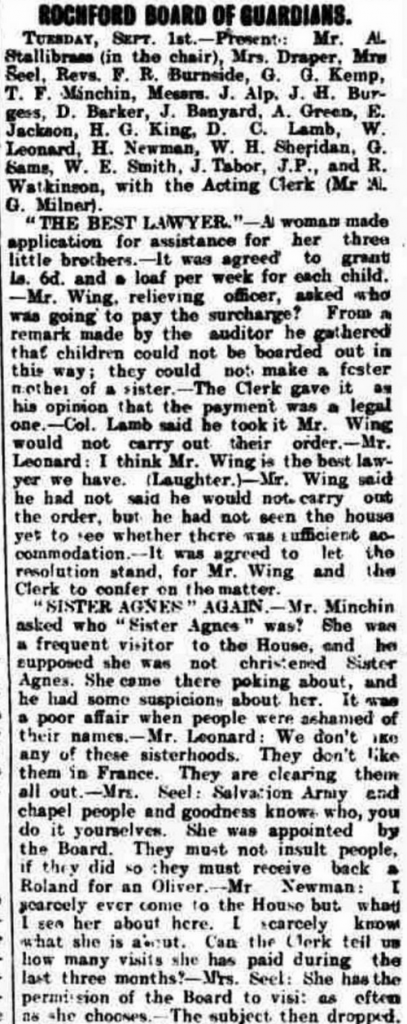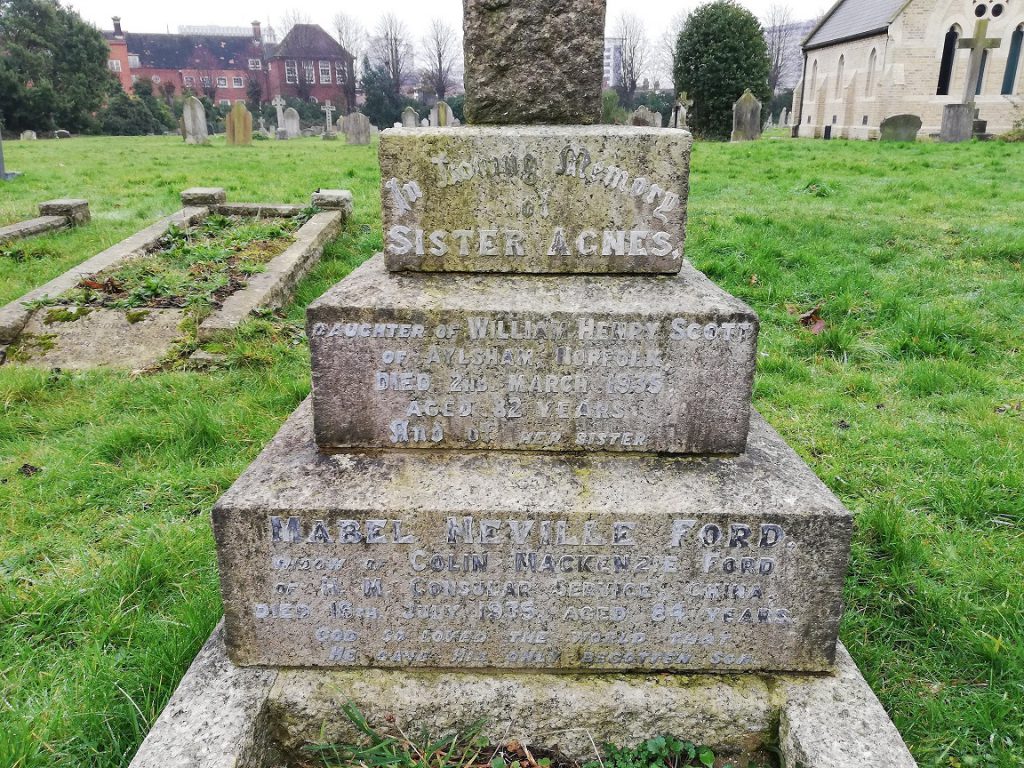Agnes Madeline Scott
20 August 1852 – 2 March 1932

From Portrait Hanging in the Vestry
Agnes was born on the 20 August 1852, the youngest child of William Henry Scott, a Solicitor living in Aylsham and was baptised on 29th September 1952
In 1881 Agnes was living at 14 Teviot Street in Poplar with Ellen Hill with an occupation of “Sister of Mercy.” At 12 Tevoit Street was another Sister of Mercy Harriet Llyod who in December 1877 was made head of a new sisterhood named the Community of the Saving Name.
In 1892 when Sister Harriet Frances (Llyod), Mother Superior of the Community of the Saving Name passed away she named Sister Agnes as her executrix. The Diocese of Chelmsford still holds two trust funds for St Albans in the name of Sister Harriet Frances Llyod.
By 1901 Agnes had returned to Aylsham to care for her Widowed Mother, although still giving her occupation as a sister of Mercy.

Everything we know about Sister Agnes until this point has come from the History of St Micheals in Camden Town. Their excellent website contains an in-depth history of Sister Agnes and Sister Harriet and clearly they both made a significant contribution to St Michaels.
By 1903 Sister Agnes is in the Southend area and continuing to follow her vocation. On September 3rd 1903 Sister Agnes is mentioned in a Southend Standard report of a meeting of the Rochford Board of Guardians, an elected body with responsibility for the Rochford Workhouse. A Mr Minchin demanded to know who Sister Agnes was and what she was about, he clearly was not a fan of her or “her type”. Another board member Mrs Steel clearly disagrees with his opinion and explains that Sister Agnes was appointed by the board and that she has permission to visit as often as she chooses.
Sister Agnes first appearance in the History of St Alban’s was in 1905. Saint Albans had established a temporary mission centre at a house in the north of the Parish and according to Britnor and Smith in Saint Alban the Martyr – The First Fifty Years “in 1905, largely through the munificence of Sister Agnes a permanent site was secured. An iron structure on a concrete and brick foundation was built and this became the Mission for the Holy Name.”
We don’t know when or why Sister Agnes moved to Westcliff but the inclusion in the church history and the presence of her Portrait on the Vestry Wall indicates how significant her contribution must have been. As we continue to research St Albans and more historical records come online I’m sure we’ll be able to continue to expand this account of Sister Agnes life.

When Sister Agnes passed away on the 2nd March 1932 Aged 82 she was resident at 87 Burdett Avenue living close enough to St Albans to have been able to see the Church from her window.
Sister Agnes was laid to rest in the North Road Burial ground less than half a mile from St Albans and possibly too conviently to be a coincidence from her plot you can see down Cliff Avenue to where the Mission of the Holy Name was located.
However, Sister Agnes’ impact on Saint Albans was far from over. The Altar she brought to the Mission of the Holy Name was moved to the main church when the mission closed and after spending some time in the chapel of the Holy Name was moved to the centre of the Nave and is now used every Sunday for Mass.
Sister Agnes agreed the funds released by the sale of the Mission could be devoted to the St Edward’s Hall, which is still serving the Church and Westcliff community today and for the purchase of 6 St John’s Road. 6 St Johns Road was sold by the Parish in 2003 but had been the home for over forty years of our late Verger Len Eastland. The proceeds from the sale of 6 St Johns Road are held in trust by the Parish and the hope is to utilise these funds to help replace the existing tin church hall and so it is highly likely there will be more chapters to come in the history of Sister Agnes’ contribution to Saint Albans.



